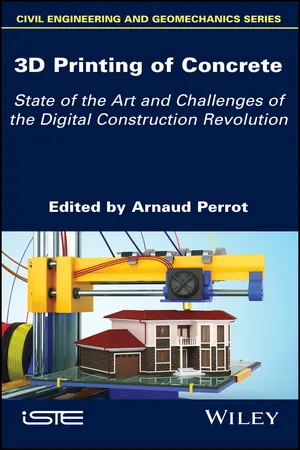
3D Printing of Concrete
State of the Art and Challenges of the Digital Construction Revolution
Arnaud Perrot, Arnaud Perrot
- English
- ePUB (adapté aux mobiles)
- Disponible sur iOS et Android
3D Printing of Concrete
State of the Art and Challenges of the Digital Construction Revolution
Arnaud Perrot, Arnaud Perrot
À propos de ce livre
The introduction of digital manufacturing techniques, such as 3D printing applied to concrete material, opens up new perspectives on the way in which buildings are designed. Research on this theme is thriving and there is a high rate of innovation related to concrete. At the same time, the first life-size constructions made from printed concrete are emerging from the ground. This book presents state-of-the-art knowledge on the different printing processes as well as on the concrete material that must adapt to these new manufacturing techniques, such as new hardware and new printers for concrete. The possibilities in terms of architectural design are discussed as well as the pathways that remain to be uncovered. The book also explores the challenges that researchers and companies expect to overcome as they get closer to democratizing this potential revolution that is the digital manufacturing of concrete.
Foire aux questions
Informations
1
3D Printing in Concrete: General Considerations and Technologies
1.1. Introduction
1.2. General considerations for 3D printing and additive fabrication
1.2.1. What is 3D printing?
1.2.1.1. Main concepts
- – digital modeling: creation of a 3D model, a true digital representation of what you would like to create. To do this, we will use CAD software. Additive fabrication is inextricably linked with the digital design of parts and structures;
- – exporting: generation of a file in a dedicated format (STL) containing all the geometrical information needed to represent the digital model;
- – stratification: conversion of the digital model into a list of com...